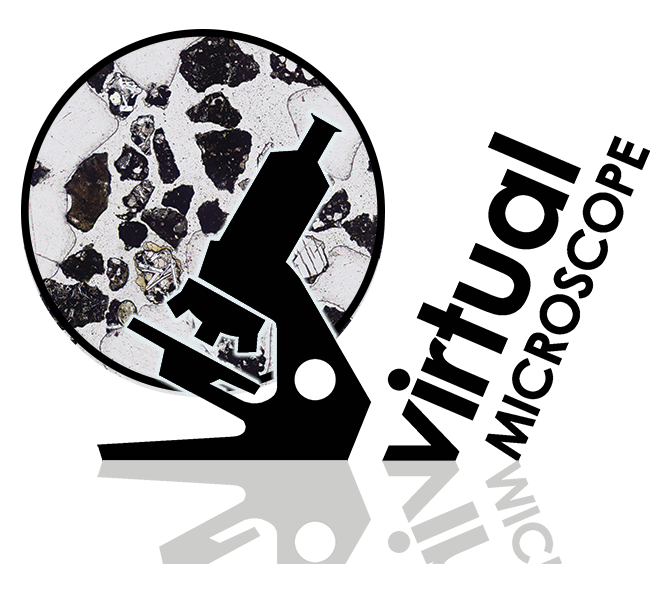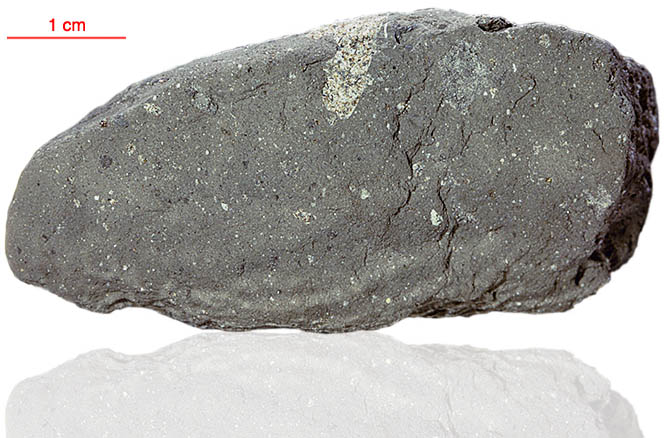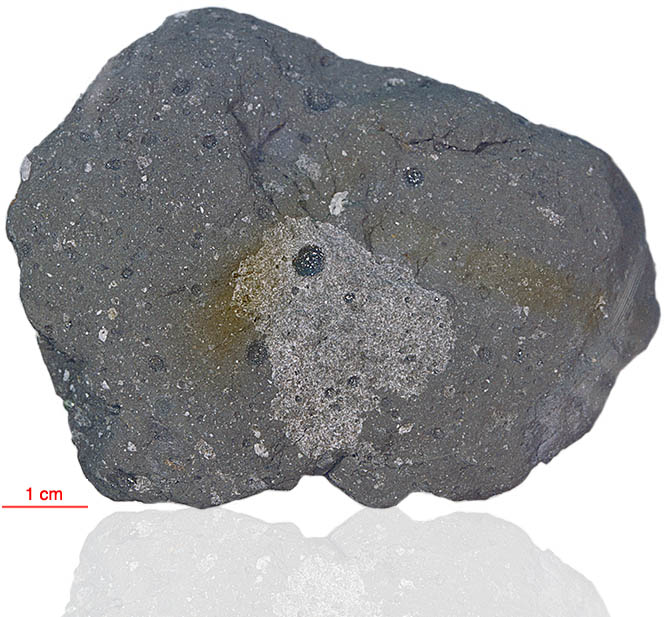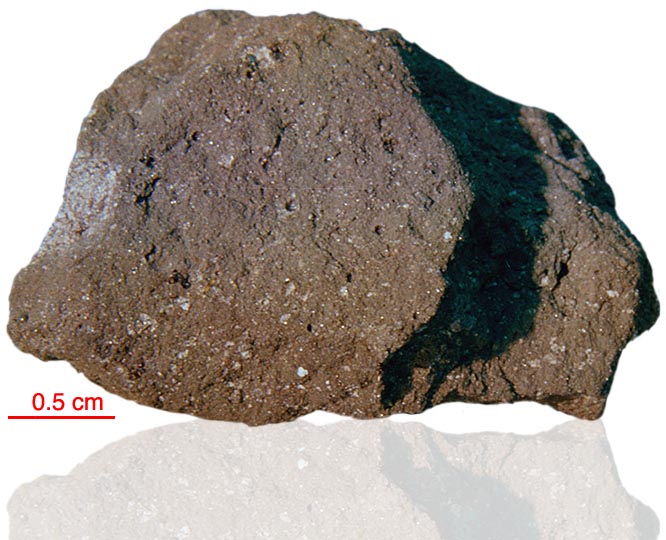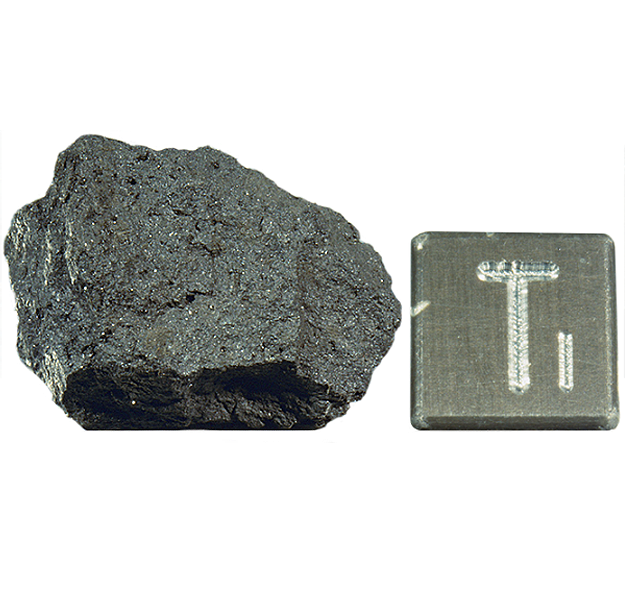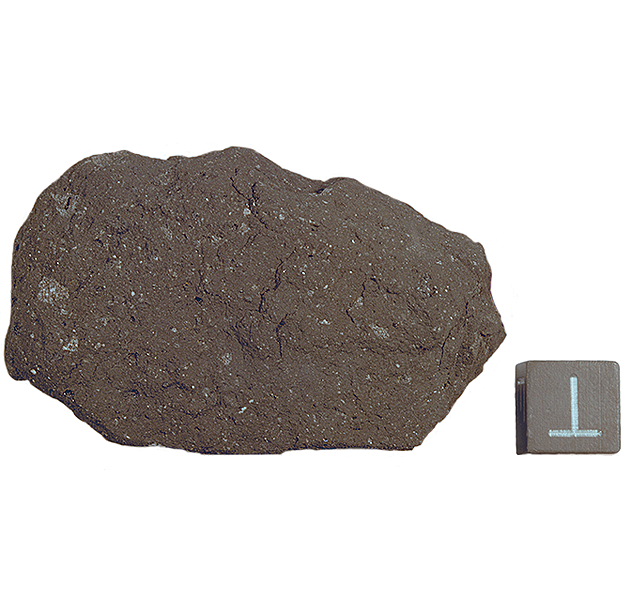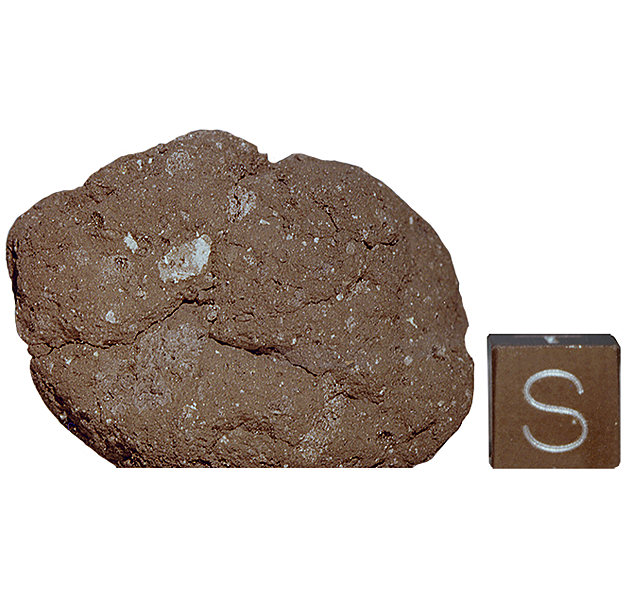
Fact sheet
Sampe 10094 is a regolith breccia found close to the Apollo 11 landing site. The outer surface has been pock-marked by micrometeorite impacts.
In thin section, 10094 has a high proportion of fine dark matrix (over 55% of the rock) and an abundance of small clasts of Lunar Mare basalt. A detailed investigation of it petrography has revealed that it also contains a small lunar highland component (anorthosite), agglutinates, pyroxene, olivine, plagioclase feldspar, ilmenite, orange glass and other glass.
Further details of this and other Apollo samples are here: http://curator.jsc.nasa.gov/lunar/
The Apollo 11 samples create an iconic collection since they were the first rocks collected by humankind that were returned to Earth from another solar system body. The Apollo 11 team collected and returned 22 kg of rock and soil samples.
Apollo 11 launched from Cape Kennedy on 16 July 1969. An estimated 530 million people watched Armstrong's televised image and heard his voice describe the event as he took "...one small step for a man, one giant leap for mankind" on 20 July 1969.

